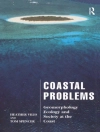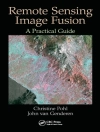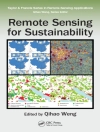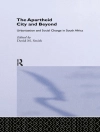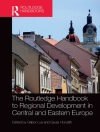‘Ideal for anyone who wishes to gain a practical understanding of spatial statistics and geostatistics. Difficult concepts are well explained and supported by excellent examples in R code, allowing readers to see how each of the methods is implemented in practice’
– Professor Tao Cheng, University College London
Focusing specifically on spatial statistics and including components for Arc GIS, R, SAS and Win BUGS, this book illustrates the use of basic spatial statistics and geostatistics, as well as the spatial filtering techniques used in all relevant programs and software. It explains and demonstrates techniques in:
- spatial sampling
- spatial autocorrelation
- local statistics
- spatial interpolation in two-dimensions
- advanced topics including Bayesian methods, Monte Carlo simulation, error and uncertainty.
It is a systematic overview of the fundamental spatial statistical methods used by applied researchers in geography, environmental science, health and epidemiology, population and demography, and planning.
A companion website includes digital R code for implementing the analyses in specific chapters and relevant data sets to run the R codes.
Зміст
About the Authors
Preface
Introduction
Spatial Statistics and Geostatistics
R Basics
Spatial Autocorrelation
Indices Measuring Spatial Dependency
Important Properties of MC
Relationships Between MC And GR, and MC and Join Count Statistics
Graphic Portrayals: The Moran Scatterplot and the Semi-variogram Plot
Impacts of Spatial Autocorrelation
Testing for Spatial Autocorrelation in Regression Residuals
R Code for Concept Implementations
Spatial Sampling
Selected Spatial Sampling Designs
Puerto Rico DEM Data
Properties of the Selected Sampling Designs: Simulation Experiment Results
Sampling Simulation Experiments On A Unit Square Landscape
Sampling Simulation Experiments On A Hexagonal Landscape Structure
Resampling Techniques: Reusing Sampled Data
The Bootstrap
The Jackknife
Spatial Autocorrelation and Effective Sample Size
R Code for Concept Implementations
Spatial Composition and Configuration
Spatial Heterogeneity: Mean and Variance
ANOVA
Testing for Heterogeneity Over a Plane: Regional Supra-Partitionings
Establishing a Relationship to the Superpopulation
A Null Hypothesis Rejection Case With Heterogeneity
Testing for Heterogeneity Over a Plane: Directional Supra-Partitionings
Covariates Across a Geographic Landscape
Spatial Weights Matrices
Weights Matrices for Geographic Distributions
Weights Matrices for Geographic Flows
Spatial Heterogeneity: Spatial Autocorrelation
Regional Differences
Directional Differences: Anisotropy
R Code for Concept Implementations
Spatially Adjusted Regression And Related Spatial Econometrics
Linear Regression
Nonlinear Regression
Binomial/Logistic Regression
Poisson/Negative Binomial Regression
Geographic Distributions
Geographic Flows: A Journey-To-Work Example
R Code for Concept Implementations
Local Statistics: Hot And Cold Spots
Multiple Testing with Positively Correlated Data
Local Indices of Spatial Association
Getis-Ord Statistics
Spatially Varying Coefficients
R Code For Concept Implementations
Analyzing Spatial Variance And Covariance With Geostatistics And Related Techniques
Semi-variogram Models
Co-kriging
DEM Elevation as a Covariate
Landsat 7 ETM+ Data as a Covariate
Spatial Linear Operators
Multivariate Geographic Data
Eigenvector Spatial Filtering: Correlation Coefficient Decomposition
R Code for Concept Implementations
Methods For Spatial Interpolation In Two Dimensions
Kriging: An Algebraic Basis
The EM Algorithm
Spatial Autoregression: A Spatial EM Algorithm
Eigenvector Spatial Filtering: Another Spatial EM Algorithm
R Code for Concept Implementations
More Advanced Topics In Spatial Statistics
Bayesian Methods for Spatial Data
Markov Chain Monte Carlo Techniques
Selected Puerto Rico Examples
Designing Monte Carlo Simulation Experiments
A Monte Carlo Experiment Investigating Eigenvector Selection when Constructing a Spatial Filter
A Monte Carlo Experiment Investigating Eigenvector Selection from a Restricted Candidate Set of Vectors
Spatial Error: A Contributor to Uncertainty
R Code for Concept Implementations
References
Index


